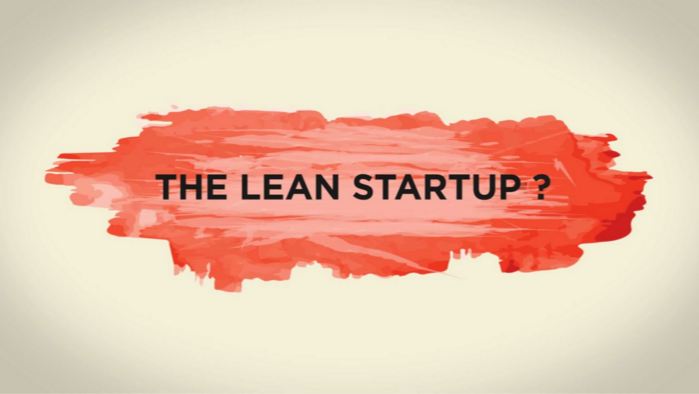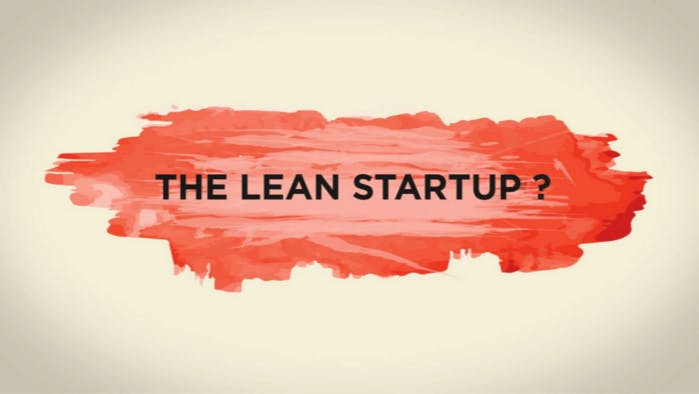
Applying Lean Startup in the workplace for innovation

Following from my previous articles on "Culture of Innovation" and "Management Practices that Foster Innovation", this one will cover the application of the Lean Startup concept in the workplace as a means to promote innovation in existing organizations.

Lean startup is a method for developing businesses and products first proposed in 2008 by Eric Ries. The application of its methodology allows startups to shorten their product development cycles by adopting a combination of business-hypothesis-driven experimentation, iterative product releases, and validated learning. This concept is highly applicable in existing companies as it allows for the testing of new ideas and initiatives in a quick and cost effective manner. Additionally, the method enables a type of effective 'natural selection' of ideas and projects, permitting only the most promising to evolve.
So, what are the Lean Startup concepts that are applicable to existing organizations?
When you have an idea, you actually have a hypothesis. You have a supposition that what you have imagined will solve a problem or will create value somehow. However, the truth is, your hypothesis needs to be tested. And it needs to be tested in a fast and cost-effective manner, so that you can change it, evolve it and also test different hypotheses as many times as you can, so to ensure you have the best idea or solution that will be accepted by the client (internal or external).
Once you have your idea, project or product draftly defined, the first step in the Lean Startup framework is to "Know your customer". And customer can be external customers, internal clients/users or even yourself. 'Know your customer' seems very business 101 but, to this day, I am impressed about how many organizations do not properly understand who they want to create value for. The Know Your Customer step has 2 sub-steps: 1) Define the customer and 2) Understand the customer.
For external customers, defining your customers means you have to identify, from the marketplace, who are the people or organizations you want to provide value for. It means you need to create a profile of your ideal customer. For an internal customer, it means you need to identify internally who your idea/project will benefit or impact. Let's take an example: let's say you have the idea to implement an online wiki system in order to host departmental policies and procedures in a way that it will be easier to frequently change/evolve them, collaborate upon them and effectively notify all people that need to know them when these documents are changed. In this case, your internal customers are the people who will both need to read the policies and procedures as well as the people who will write them.
The second subitem is to understand your customer. Talking to them goes a long way in getting to know them. Talk to as many as you can, being them internal or external customers. In the tech world, there is a saying that customers do not really know what they want until they see it (check the creation of the first iPhone as example). This is somehow true for finding innovative solutions. However, by talking to people, you will understand their needs. People may not understand exactly what they want, need or will value, but a smart person can understand the customer's underlying needs from talking to customers and they can come up with unique ways to fulfill them.
After talking with and understanding your potential customers, you usually have some additional information to already evolve somehow your idea. In any case, you need to start the Lean Startup loop so you can empirically test your idea in a cost-time-effective manner.
The loop goes like this:
You start by building a very simple version of your idea to test it with your customers. The cost/time effectiveness of building it is key. You want to create a "Minimum Viable Product", something that can demonstrate the main value-adding features of your idea but that does not cost much in terms of money or time to build and test. MVPs can take many forms. An MVP of a smartphone app can be simply some basic drawings of the app interface on paper, so you can show it to your customers and check if they would buy it or if it would benefit them. Zappos, one of the largests online stores in the world, has a famous and brilliant example of use of an MVP. Zappos founder, Nick Swinmurn, to test the idea that people would buy shoes online, simply took pictures of shoes from his local shoe store and posted them in a quickly built simple website. When people purchased the shoes in his website, he would then buy the shoes in the physical store for the full price and would post them to his clients. In this way, Swinmurn deduced that customer demand was present, and Zappos would eventually grow into a billion dollar business based on the model of selling shoes online.
In our Wiki policies and procedures example, a quick MVP could be achieved simply by entering into a free trial with an online Wiki software as a service provider, building a few wiki pages of policies and procedures and enlisting a few of your 'early adopter' internal clients to read and update the wiki documents. Their impressions would dictate if your idea would be adopted and/or how it could be improved.
When you have your MVP, you need to empirically test your idea. This means you need meaningful feedback and data. Test your MVP with early adopters, people drawn from your prospective client base that are open to accept imperfections and usually enjoy checking out new ideas.
Most of the time, you will learn great insights from the feedback stage, which will allow you to evolve/adapt your idea to something that will actually be accepted by your client base. Sometimes you will get good insights for incremental improvements, sometimes you will even change your desired client base, sometimes your ideas will simply be proven not feasible, and sometimes you will find a completely different idea to solve the same problem. In any occasion, you create a new MVP, either evolving or changing the previous one, and continue the loop until you have something with the highest chance of success. The Lean Startup loop will allow your ideas and projects to be empirically tested and evolved.
The main point of this article is to impress the need for ideas and initiatives to be quickly materialized and trialed in a very cost and time effective manner. People are very good at having ideas, but these are often based on assumptions that often end up not being valid. The era of large business plans with heavy budgets and long development and implementation periods for a project, just to find out that its underlying assumptions were wrong, has ended.
If an organization fosters an environment that allows for any people to lead initiatives, implement them with very little budget and test their hypothesis in a fast and effective manner, many new ideas can thus be tested at the same time by many different people. This is Natural Selection in effect in the organisation. You will foster the spawning of a large amount of ideas, throw them on the environment and the most appropriate/adapted will grow, evolve and prosper in a virtuous cycle that has been proved to create great things.
At Go1, we are constantly trying different ways of doing things. We have tested many different processes and tools to solve internal needs. We just have an open policy for people to try it out and see how it goes. If it gets traction, we evolve it and officially implement it in the remaining of the company. If not, well, we just try a different approach.




